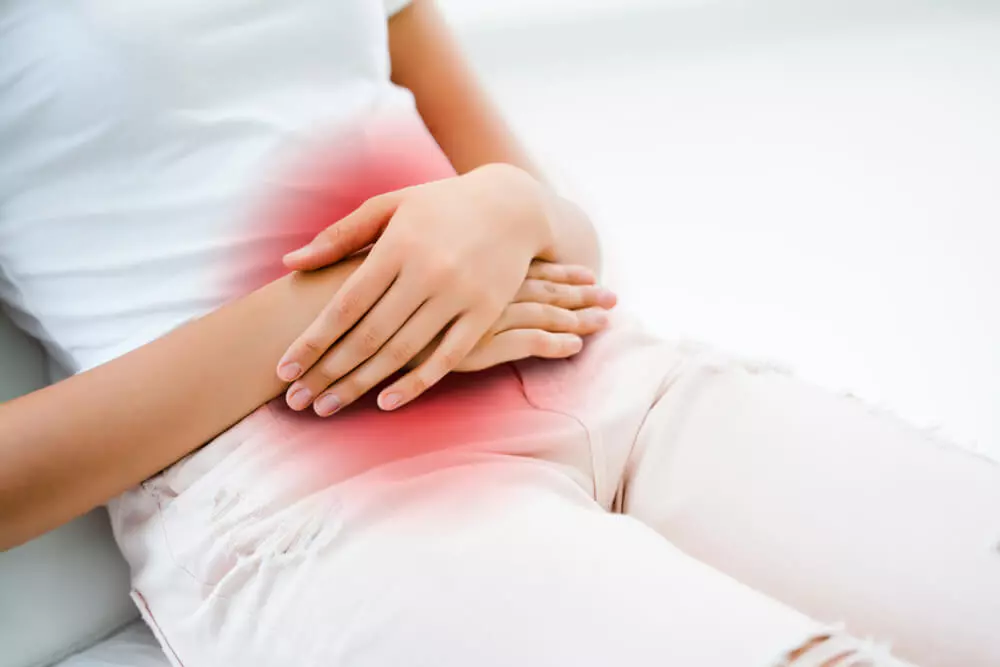-
Opening Hours
Mon - Sat: 10:00 - 19:00
Menstrual Disorders
Home/Female Disorder/Menstrual Disorders
Treatment
Menstrual Disorders
With each menstrual cycle, the uterus prepares itself to nourish a fetus. If fertilization doesn’t occur, the body sheds the uterine tissues in the form of blood during the monthly cycle. The absence of a menstrual cycle, profuse or scanty bleeding, or painful menses are the common menstrual disorders women face.

Amenorrhoea:
- Primary amenorrhoea: When menses don’t start at puberty.
- Secondary amenorrhoea: Normally occurring periods become absent due to some underlying cause.
Causes:
Amenorrhoea can occur in normal life events like pregnancy, breastfeeding, and menopause.
other reasons are:
- A birth defect or anatomical abnormality.
- Ovulation abnormality.
- Obesity.
- Hormonal disorders like thyroid, PCOD, etc.
Menorrhagia:
Heavy and prolonged menstrual bleeding affecting daily activities is called menorrhagia.
Causes:
- Hormonal imbalance.
- Pelvic inflammatory disease (PID).
- Uterine fibroids.
- Abnormal pregnancy; i.e., miscarriage, ectopic (tubal pregnancy).
- Certain birth control devices; i.e., intrauterine devices (IUDs).
- Bleeding or platelet disorders.
- Liver, kidney, or thyroid disease.
Metrorrhagia:
Any irregular, non-menstrual bleeding as in bleeding which occurs between menstrual periods is called metrorrhagia.
Causes:
- Pelvic inflammatory disease (PID).
- Uterine fibroids.
- Abnormal pregnancy; i.e., miscarriage, ectopic (tubal pregnancy).
- Infection, tumors, or polyps in the pelvic cavity.
- Certain birth control devices; i.e., intrauterine devices (IUDs).
- Bleeding or platelet disorders.
Dysmenorrhoea:
Dysmenorrhea is severe menstrual cramps and pain. Many women may experience such discomfort and it’s normal. But if the severe pain is disturbing the daily routine, it requires medical attention.
Causes:
- Pelvic inflammatory disease (PID).
- Uterine fibroids.
- Abnormal pregnancy (i.e., miscarriage, ectopic).
- Infection, tumors, or polyps in the pelvic cavity.
Homeopathic Approach:
Homeopathic medicines are very effective in menstrual disorders. Homeopathic medicines help to balance hormones in the body, which improves the menstrual cycle. These changes occur without any side effects. With homeopathic medicines, the body heals from within so patients don’t get dependent on medicines.
Homeopathic Invention:
The biological conflict linked to irregular menstruation is a:
- Loss conflict concerning the loss of a loved person, or a loss of something which was very close to her be a person, a thing, or a pet. The fear of losing a beloved person can already trigger the conflict. Constant self-blame following a break-up or the death of someone close can keep the conflict-active. Women also suffer loss conflicts after miscarriages or coerced abortions. A loss conflict can be activated through an argument, betrayal, or unfaithfulness of a partner or friend
- A sexual conflict refers to any distress concerning sexuality. This includes painful (first-time) sex, sexual abuse, sexual harassment, unwanted sexual practices, sexual rejection, feeling sexually unwanted, a lack of sexual activity because of an unexpected separation or loss of a mate.
Homeopathic Medicines:
- Calcarea Carb: Before menses, headache, colic, chilliness, and leucorrhoea. Cutting pains in the uterus during menstruation. Menses too early, too profuse, too long, with vertigo, toothache, and cold, damp feet; the least excitement causes their return. Uterus easily displaced. Burning and itching of parts before and after menstruation; in little girls. Increased sexual desire; easy conception. Breasts tender and swollen before menses. Uterine polyps.
- Ferrum Met: Menses remit a day or two and then return. Discharge of long pieces from the uterus. Women who are weak, delicate, chlorotic, yet have a fiery-red face. Menses too early, too profuse, last too long; pale, watery. Sensitive vagina. Tendency to abortion. Prolapse of the vagina.
- Hamamelis: Ovarian congestion and neuralgia; feel very sore. Vicarious menstruation. Uterine hemorrhage, bearing-down pain in the back. Menses dark, profuse, with soreness in abdomen. Metrorrhagia, occurring midway between menstrual periods. Intermenstrual pain. The vagina is very tender. Profuse leucorrhoea. Vulva itches. Metrorrhagia; passive flow. Vaginismus, ovaritis, soreness over whole abdomen.
- Sabina: Menses profuse, bright. Uterine pains extend into thighs. Threatened miscarriage. Sexual desire increased. Leucorrhoea after menses, corrosive, offensive. Discharge of blood between periods, with sexual excitement. Menorrhagia in women who aborted readily. Pain from sacrum to pubis, and from below upwards shooting up the vagina. Hemorrhage; partly clotted; worse from least motion.
- Sepia: Menses Too late and scanty, irregular; early and profuse; sharp clutching pains. Violent stitches upward in the vagina, from the uterus to the umbilicus. Bearing-down sensation as if everything would escape through vulva; must cross limbs to prevent protrusion, or press against vulva.
- Magnesia Phosphoric: Painful cramps and pain in the pelvic region that are relieved by pressure and warmth often respond to this remedy. Periods may start too early, often with a dark or stringy discharge, and pain is usually worse on the right side of the body.
For appointment please call @ 020 27455480 / +91 9405 435 981
-
Opening Hours
Mon - Sat: 10:00 - 19:00